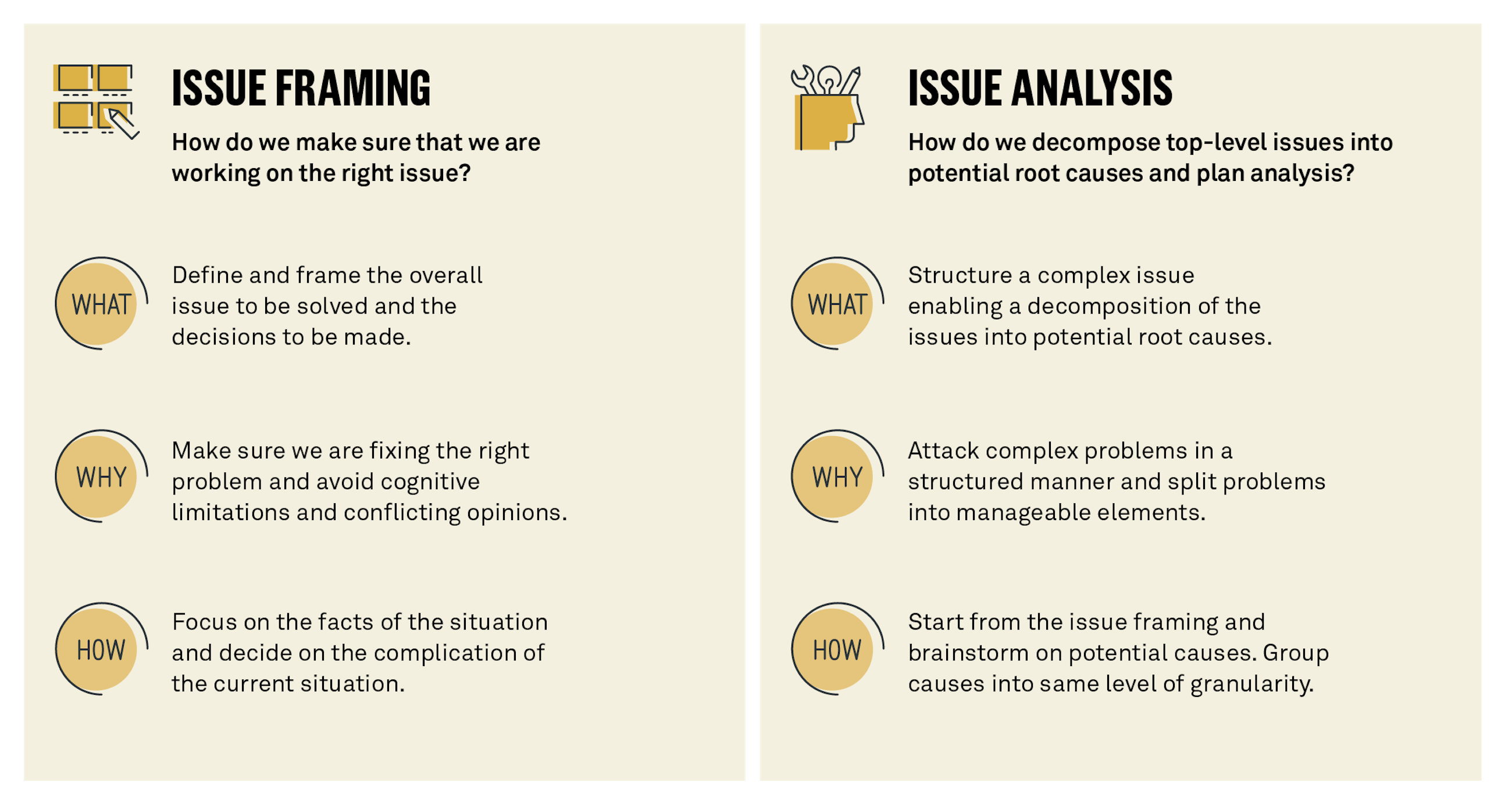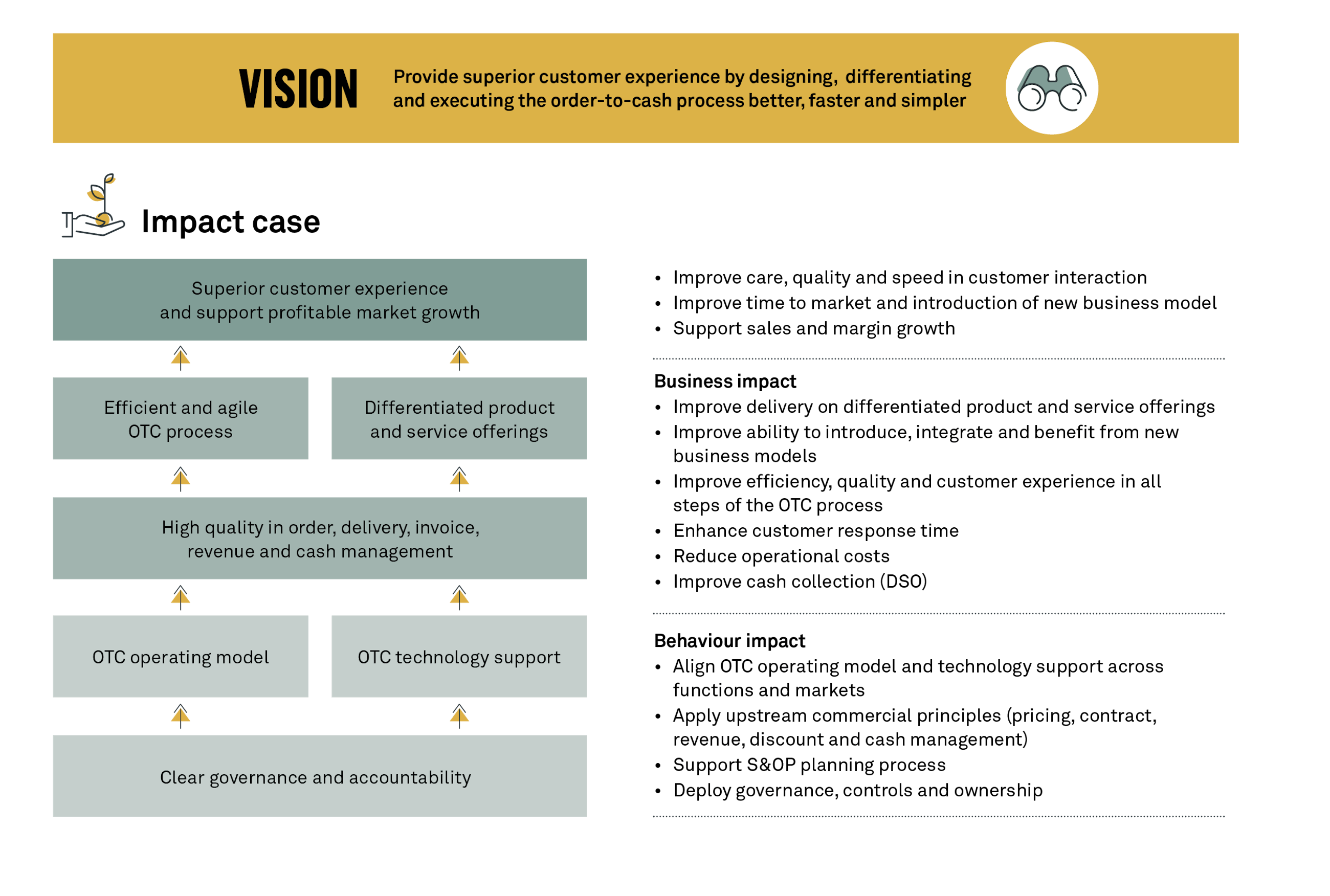- and ensure a successful order-to-cash transformation
7 August 2020
When you carry out an order-to-cash (OTC) transformation, the impact your organisation anticipates from the transformation will have many variations. Most variations will involve your customers’ perception and experience of your brand and business. To build purpose and clarity and to create rapid impact from your transformation journey, you must be specific on what you strive for and build a strong case for change from the beginning.
An order-to-cash process is a complex process that involves a vast number of stakeholders. This often results in a wide range of improvement goals and change requirements for the existing processes to be carried out during the transformation journey. Thus, for your order-to cash-transformation to be successful, it is important that you understand your stakeholders and all of their well-intentioned ambitions for the change that is about to happen.
Charles Darwin
Understand your case for change
OTC issues in your organisation can vary across process and function. The commercial function might lack a sufficient CRM system that integrates to ERP, supply chain function might struggle with inefficiencies in service delivery, and the finance department might struggle with data quality when executing invoices, which means that customers experience low quality in service delivery and receive wrong invoices.
However, all these issues are often deeply interlinked and stem from insufficient order-to-cash principles, structures and governance.
When you design your case for change, it is pivotal that you understand these issues, their decomposition and their root causes.
To provide the key questions to answer in your OTC transformation, you can use issue framing (see figure below). It is essential that you can answer how OTC improvements will support and help deliver on your corporate strategy.
What might be a case for change
There are numerous designs and articulations of your case for change. Below, we have listed examples of typical cases where you might want to:
- Drive digital customer experience through back-office integration and automation.
- Reduce time to market through revenue and platform design.
- Increase productivity and enhance customer insights.
- Optimise IT spending and streamline back-, middle- and frontware.
- Reduce DSO and DIO through aligned processes across market-to-order, S&OP and order-to-cash.
- Enhance customer experience by delivering in full and on time from coordinated efforts in S&OP, market-to-order and order-to-cash.
The most important thing when articulating your case for change is that you are explicit in your vision for your OTC transformation in order to prepare a core story that you communicate unanimously to your stakeholders.
Define your project scope
To enable true change that will drive your business objectives, it is crucial that you establish an end-to-end perspective on OTC. Your issue framing and root cause analysis might suggest a relevant scope for your OTC transformation. You might identify issues and inefficiencies across the organisational functions (IT, sales, supply chain, finance or other support functions) or across the specific business units, the product portfolio or different markets and geographies.
It is key that you identify the dimensions that are most critical and have the most potential in your transformation journey. To do this, an initial starting point might be to consider three main questions:
- How do we consider order-to-cash design requirements specific to our business and our strategy?
- What critical capabilities need to be in scope for a future state order-to-cash design and implementation?
- What choices regarding programme features, cadence and order-to-cash road map should be considered?
When you build a strong case for change on your OTC transformation journey, it will provide you and your organisation with a clear purpose, clarity in what to achieve and clear prioritisation of your ambitions and goals. Thus, the case for change process will define the specific issues you need to attack and thereby provide a stepping-stone for rapid impact of your order-to-cash transformation.






